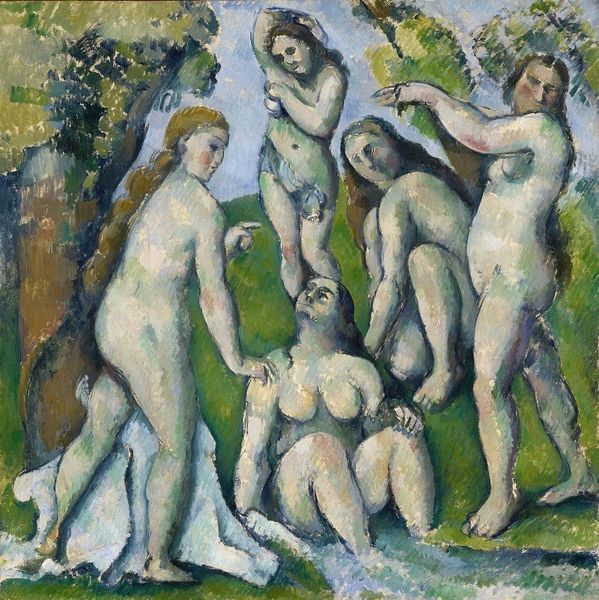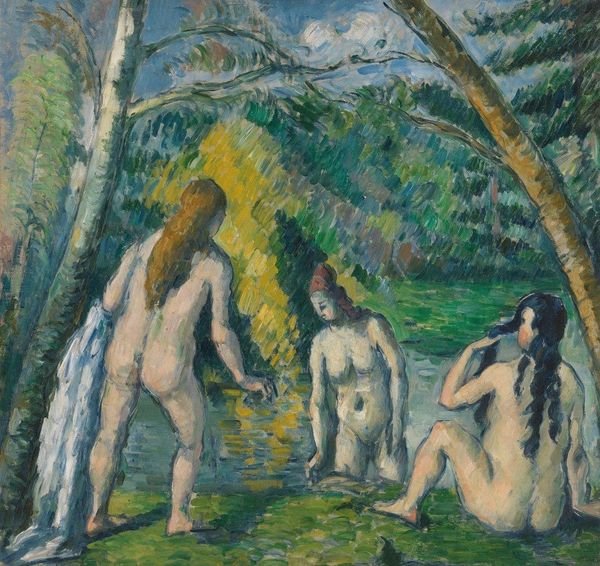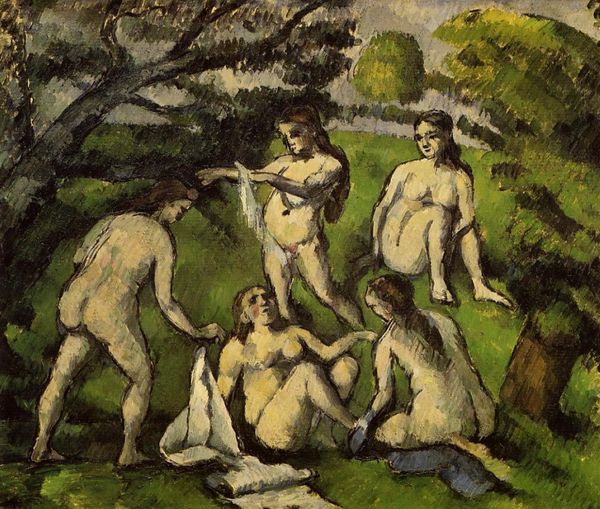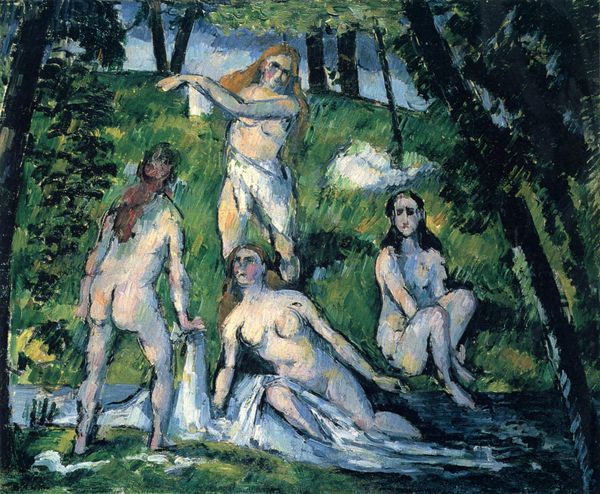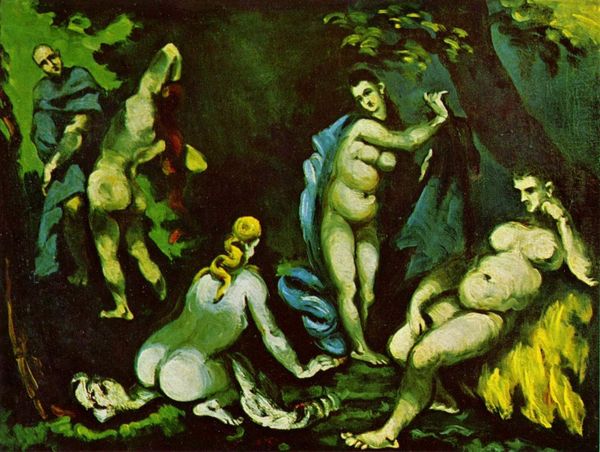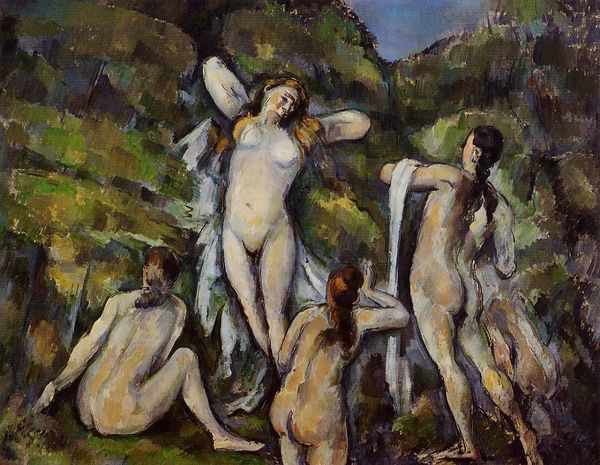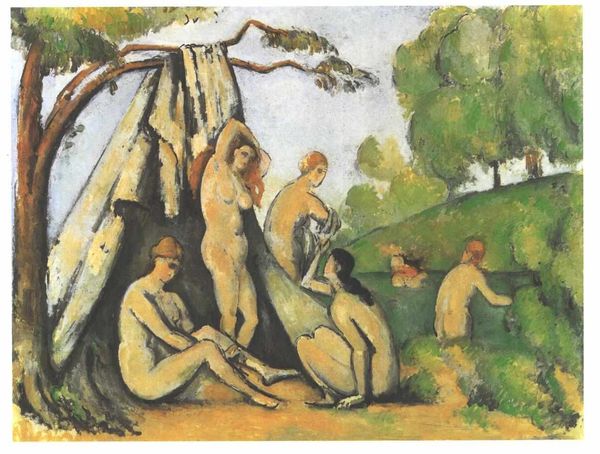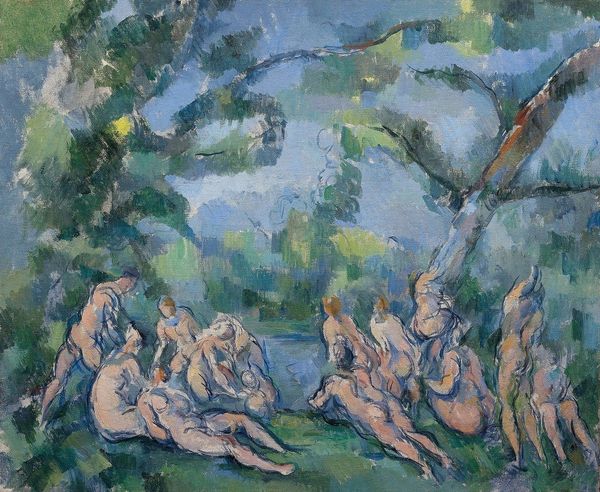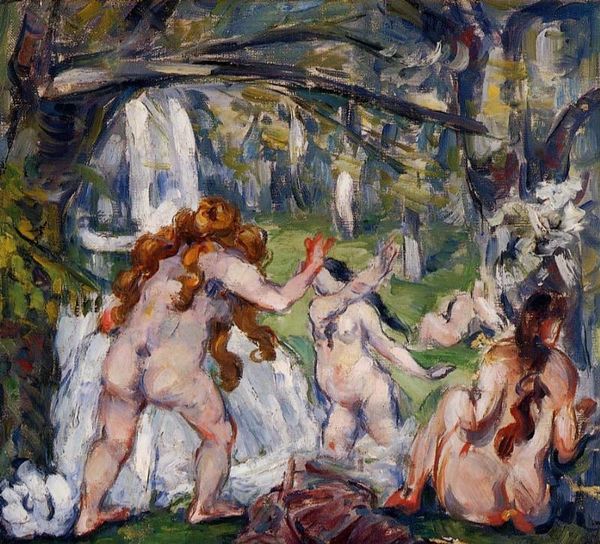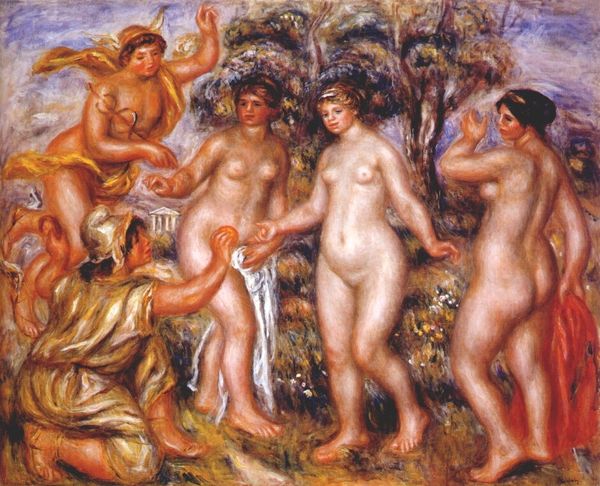
painting, oil-paint, impasto
#
painting
#
oil-paint
#
landscape
#
figuration
#
oil painting
#
impasto
#
group-portraits
#
post-impressionism
#
nude
Dimensions: 35 x 39.5 cm
Copyright: Public domain
Editor: This is Paul Cézanne's "Four Bathers," painted around 1880. It's an oil painting depicting, well, four nude figures in a landscape. I'm struck by how unconventional their poses are, almost awkward, and the painting feels… unfinished in a way. What do you see in this piece? Curator: I see a challenge to the dominant patriarchal gaze within art history. Cézanne moves away from the idealized, often sexualized, depictions of women that were so common. Instead, we have these figures in a seemingly private, natural setting. Editor: So, you think he's intentionally trying to deconstruct that male gaze? Curator: Exactly. Consider the era; traditional academic painting rigidly dictated how the female form should be represented. Cézanne disrupts this tradition, almost pushing back against it. He presents the figures in a very natural state, not necessarily posed to be sensual, but caught in private action and in diverse postures. Notice the composition with all these sharp geometric forms, an angularity that subverts classical ideals of smooth lines and harmonious proportions. How do you read this? Editor: I hadn’t really thought of it that way. I guess I saw their lack of polish as a kind of flaw, but now it seems more deliberate. Their imperfections almost feel like a strength, in defiance of how women were "supposed" to be depicted. Curator: Precisely! It's as if Cézanne is saying, "These are women as they are, not as they are expected to be." Also the ambiguity of their interactions: what narrative possibilities open up if we let go of presumptions about this subject in painting? This approach forces a reassessment of our expectations when viewing the nude. It becomes less about objectification and more about presence. Editor: I never considered the social context and that Cézanne could be critiquing existing power structures. I learned a lot about this painting. Curator: Absolutely! Considering such artworks can transform how we perceive gender and representation, in the art of that time and our time.
Comments
No comments
Be the first to comment and join the conversation on the ultimate creative platform.
